Input interpretation

cis-1-ethyl-3-methylcyclopentane
Chemical names and formulas
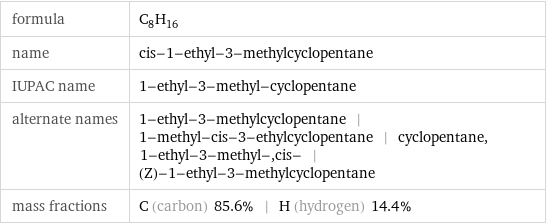
formula | C_8H_16 name | cis-1-ethyl-3-methylcyclopentane IUPAC name | 1-ethyl-3-methyl-cyclopentane alternate names | 1-ethyl-3-methylcyclopentane | 1-methyl-cis-3-ethylcyclopentane | cyclopentane, 1-ethyl-3-methyl-, cis- | (Z)-1-ethyl-3-methylcyclopentane mass fractions | C (carbon) 85.6% | H (hydrogen) 14.4%
Lewis structure

Draw the Lewis structure of cis-1-ethyl-3-methylcyclopentane. Start by drawing the overall structure of the molecule: Count the total valence electrons of the carbon (n_C, val = 4) and hydrogen (n_H, val = 1) atoms: 8 n_C, val + 16 n_H, val = 48 Calculate the number of electrons needed to completely fill the valence shells for carbon (n_C, full = 8) and hydrogen (n_H, full = 2): 8 n_C, full + 16 n_H, full = 96 Subtracting these two numbers shows that 96 - 48 = 48 bonding electrons are needed. Each bond has two electrons, so the above diagram has all the necessary bonds. There are 24 bonds and hence 48 bonding electrons in the diagram. Lastly, fill in the remaining unbonded electrons on each atom. In total, there remain 48 - 48 = 0 electrons left to draw and the diagram is complete: Answer: | |
3D structure
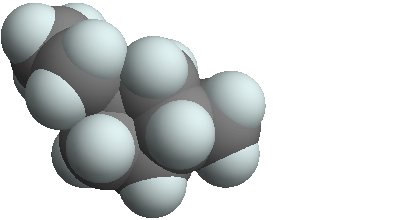
3D structure
Basic properties
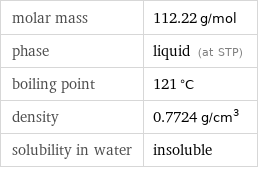
molar mass | 112.22 g/mol phase | liquid (at STP) boiling point | 121 °C density | 0.7724 g/cm^3 solubility in water | insoluble
Units

Liquid properties (at STP)
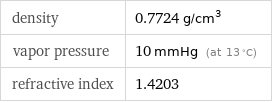
density | 0.7724 g/cm^3 vapor pressure | 10 mmHg (at 13 °C) refractive index | 1.4203
Units

Chemical identifiers
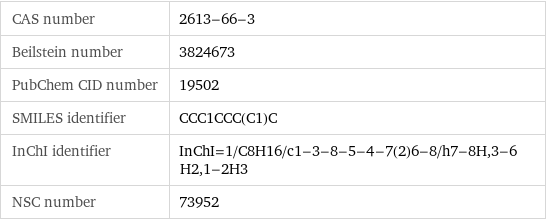
CAS number | 2613-66-3 Beilstein number | 3824673 PubChem CID number | 19502 SMILES identifier | CCC1CCC(C1)C InChI identifier | InChI=1/C8H16/c1-3-8-5-4-7(2)6-8/h7-8H, 3-6H2, 1-2H3 NSC number | 73952